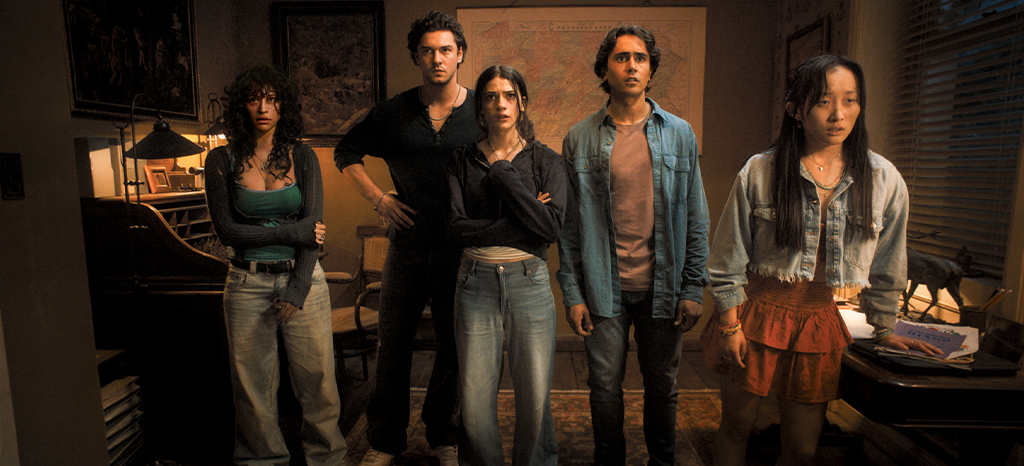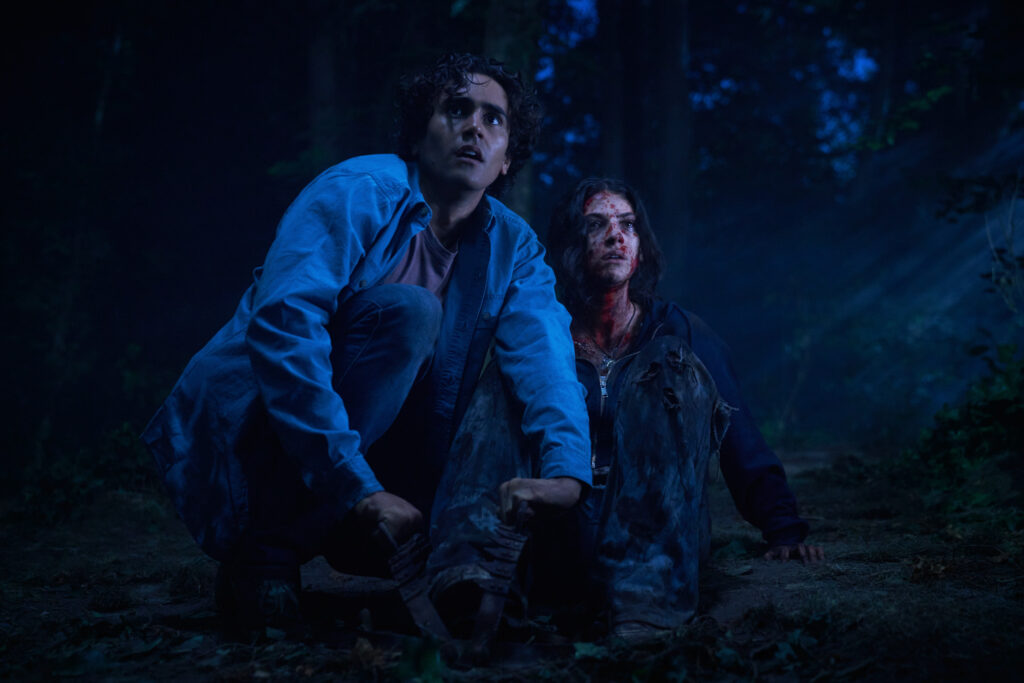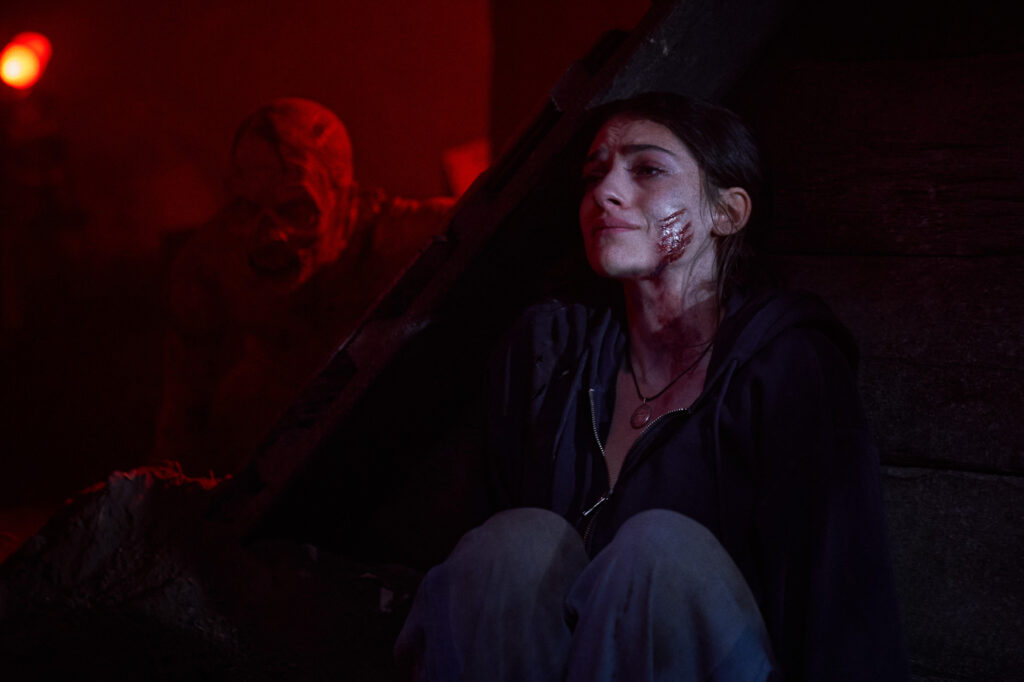
Blending slasher movie tropes with interactive storytelling, Until Dawn is a cinematic horror game developed by Supermassive, which has gained a strong cult following since its release in 2015. It follows a group of friends who must survive a terrifying night in an isolated mountain lodge, where every choice they make impacts who lives and who dies.
Now, the world of Until Dawn has made its way to the big screen under the direction of David F. Sandberg, best known for his work on Lights Out, Annabelle: Creation, and Shazam!.
While many recent video game adaptations (such as HBO’s The Last of Us) have achieved success by staying true to their source material, the team behind Until Dawn took a different route. Rather than directly recreating the game’s original narrative, the filmmakers crafted an entirely new story that remains firmly set in the world of the game.
In an interview with Dread Central, Screenwriter Blair Butler explained that the decision to take a new direction stemmed from the team’s admiration for the original work.
 Butler said that Until Dawn already plays like a “perfect, playable horror movie” and believes the original creative team set a high bar that would be difficult to surpass.
Butler said that Until Dawn already plays like a “perfect, playable horror movie” and believes the original creative team set a high bar that would be difficult to surpass.
Additionally, with a remaster of the game arriving around the same time as the film, the filmmakers felt it was important to offer audiences something fresh rather than a beat-for-beat adaptation.
Instead of retelling the same story, the team sought to expand Until Dawn’s universe while preserving what made the game special. The film continues to pay tribute to classic horror tropes, much like the game, which seamlessly shifts between subgenres – from slasher to supernatural thriller.
The concept of player choice, a core mechanic in the game, is also being reimagined for the film, allowing for multiple outcomes within a non-interactive format.
Sandberg was particularly excited about this approach, noting that simply condensing the game into a movie wouldn’t have been exciting. Instead, he was drawn to the way the film retains the spirit of the game’s branching narrative while offering a fresh cinematic experience.
The plot follows a group of friends who venture into a remote valley to investigate the mysterious disappearance of one member’s sister. Their trip quickly turns into a nightmare as they are hunted by a masked killer. However, the horror doesn’t end with death.
 The group finds themselves trapped in a time loop, with the night resetting each time they die. Each time the loop resets, a new horror threat emerges, making survival unpredictable. As the loops progress, they realise they have a limited number of deaths before it’s too late. Their only way to escape is to survive, fittingly, until dawn.
The group finds themselves trapped in a time loop, with the night resetting each time they die. Each time the loop resets, a new horror threat emerges, making survival unpredictable. As the loops progress, they realise they have a limited number of deaths before it’s too late. Their only way to escape is to survive, fittingly, until dawn.
As Sandberg explained in an interview with Polygon, “Every night, every time it resets, it’s a new horror genre. We get pretty much all of it in here – slasher, supernatural, body horror, found footage, even monsters.
“In a classical Groundhog Day sense, you have characters who learn from each loop. You can’t do that here, because it changes every time. You just die in different ways.”
Although the film tells a different story, it doesn’t shy away from incorporating visual call-backs to the game. In the film’s trailer, iconic elements such as the eerie mask worn by Rami Malek’s character and (what appears to be) the Wendigo make appearances, reinforcing the film’s ties to its source material.
Sandberg noted that while some references may remind players of other Supermassive Games titles, these homages are more about maintaining thematic consistency rather than directly linking different games. The team aimed to strike a balance, ensuring Until Dawn felt fresh while still including fun nods for longtime fans.
In addition, the filmmakers have gone to great lengths to make Until Dawn as gruesome as possible, with massive practical blood effects sequences that required careful planning.
 According to Sandberg, entire locations were destroyed in the process. Sandberg told Dread Central, “You have to schedule certain things towards the end of this shoot where we really ruin the set, because there’s blood everywhere and that’s never coming out.”
According to Sandberg, entire locations were destroyed in the process. Sandberg told Dread Central, “You have to schedule certain things towards the end of this shoot where we really ruin the set, because there’s blood everywhere and that’s never coming out.”
Reportedly, the graphic intensity of some scenes even made crew members look away, so it’s obvious that horror fans will not be left disappointed.
In the past, audiences approached video game adaptations with great trepidation, but in recent years, those concerns have been eased, with many properties making a smooth jump from console to cinema and pleasing fans in the process.
With its unique approach to the game’s mechanics, an unpredictable storyline, and a mix of spectacular practical effects and psychological terror, Until Dawn is another adaptation that breaks the video game-to-movie curse.
Until Dawn is in cinemas now.
LEAD IMAGE: Odessa A’zion, Belmont Cameli, Ella Rubin, Michael Cimino and Ji-young Yoo in ‘Until Dawn’








